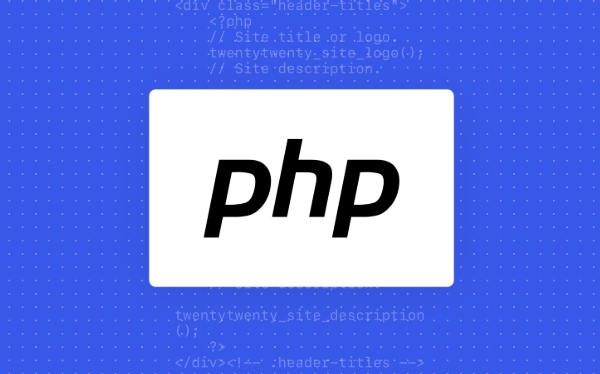Unlocking Complex Logic for Updating Specific Array Elements
Aug 02, 2025 pm 03:32 PMTo effectively update specific elements in an array, conditional logic, immutability principles and performance optimization strategies must be combined. 1. Use findIndex() to locate a single matching element and update it with the expansion operator, or use map() to update all elements that meet the conditions, and give priority to keeping the original array unchanged; 2. For nested structures, use map() and nested map() to judge the update layer by layer, or write recursive functions to process dynamic paths; 3. In frameworks such as React, use map() to return a new array through functional setState to ensure that the correct re-render is triggered; 4. For large arrays, data can be converted into object maps to achieve O(1) search and update, and if necessary, then return to the array to exchange space for time. The ultimate key is to select appropriate update strategies based on the data structure and application scenarios, keeping the logic clear, maintainable and efficient.

Updating specific elements in an array—especially in complex or nested scenarios—requires more than just basic indexing. It demands a clear understanding of data structures, mutability, conditional logic, and sometimes asynchronous behavior. Whether you're working with primitive values, objects, or deeply nested arrays, the logic must be precise to avoid unintended side effects or performance issues.

Here's how to approach and unlock the complex logic behind updating targeted array elements effectively.
1. Identify the Right Element(s) Using Conditional Logic
The first challenge is locating the element(s) you want to update. Simple index access works when you know the position, but in real-world cases, you often need to search based on content.

Use methods like findIndex() , map() , filter() , or forEach() depending on your goal:
-
Update the first matching element:

const users = [{ id: 1, name: 'Alice' }, { id: 2, name: 'Bob' }]; const index = users.findIndex(user => user.id === 2); if (index !== -1) { users[index] = { ...users[index], name: 'Bobby' }; } Update all matching elements:
const updatedUsers = users.map(user => user.id === 2 ? { ...user, name: 'Bobby' } : user );
Avoid mutating the original array unless necessary. Prefer immutability for predictable state updates (especially in React or Redux).
2. Handle Nested Arrays and Objects with Recursion or Path Traversal
When arrays contain nested structures (eg, arrays of objects with array properties), simple updates won't suffice.
Consider this structure:
const data = [
{ id: 1, items: [{ subId: 101, value: 'old' }] },
{ id: 2, items: [{ subId: 102, value: 'also old' }] }
]; To update value where subId === 101 :
const updatedData = data.map(item =>
item.items.some(sub => sub.subId === 101)
? {
...item,
items: item.items.map(sub =>
sub.subId === 101 ? { ...sub, value: 'new' } : sub
)
}
: item
); For deeply nested or dynamic paths, consider using a utility function that traverses by path (like lodash.set ), or write a recursive updater that walks the structure based on conditions.
3. Deal with Immutability and State Management Constraints
In frameworks like React, directly mutating state is discovered. Even if logic finds the right element, improve updates can break reaction.
Common pitfalls:
- Using
array[index] = newValueon state arrays - Forgetting to create new references when updating nested items
Correct pattern:
setUsers(prev => prev.map(user =>
user.id === targetId ? { ...user, status: 'active' } : user
));If performance is a concern with large arrays, consider using indexes or memoization to avoid unnecessary re-renders.
4. Optimize for Performance in Large or Frequently Updated Arrays
For large datasets, avoid full scans or re-mapping on every update.
Strategies:
- Cache indexes if the key space is stable
- Use objects/maps for O(1) looksups instead of array searches
- Batch updates when possible
- Debounce or throttle frequently updates
Example: Convert to object map for faster access:
const userMap = Object.fromEntries(users.map(u => [u.id, u])); userMap[2].name = 'Bobby'; // Fast update const updatedArray = Object.values(userMap); // Convert back if needed
This trades memory for speed—ideal when reads and updates are frequently.
Final Thoughts
Unlocking complex array update logic isn't about writing clever code—it's about choosing the right strategy for the data shape and use case. Key takeaways:
- Always consider immutability in stateful contexts
- Use functional methods (
map,filter,findIndex) for clarity - Break down nested updates step by step
- Optimize only when necessary, based on actual performance needs
Basically, the more structured your data and update logic, the easier it is to maintain and debug. Keep it predictable, and you'll avoid most pitfalls.
The above is the detailed content of Unlocking Complex Logic for Updating Specific Array Elements. For more information, please follow other related articles on the PHP Chinese website!

Hot AI Tools

Undress AI Tool
Undress images for free

Undresser.AI Undress
AI-powered app for creating realistic nude photos

AI Clothes Remover
Online AI tool for removing clothes from photos.

Clothoff.io
AI clothes remover

Video Face Swap
Swap faces in any video effortlessly with our completely free AI face swap tool!

Hot Article

Hot Tools

Notepad++7.3.1
Easy-to-use and free code editor

SublimeText3 Chinese version
Chinese version, very easy to use

Zend Studio 13.0.1
Powerful PHP integrated development environment

Dreamweaver CS6
Visual web development tools

SublimeText3 Mac version
God-level code editing software (SublimeText3)
 PHP Variable Scope Explained
Jul 17, 2025 am 04:16 AM
PHP Variable Scope Explained
Jul 17, 2025 am 04:16 AM
Common problems and solutions for PHP variable scope include: 1. The global variable cannot be accessed within the function, and it needs to be passed in using the global keyword or parameter; 2. The static variable is declared with static, and it is only initialized once and the value is maintained between multiple calls; 3. Hyperglobal variables such as $_GET and $_POST can be used directly in any scope, but you need to pay attention to safe filtering; 4. Anonymous functions need to introduce parent scope variables through the use keyword, and when modifying external variables, you need to pass a reference. Mastering these rules can help avoid errors and improve code stability.
 How to handle File Uploads securely in PHP?
Jul 08, 2025 am 02:37 AM
How to handle File Uploads securely in PHP?
Jul 08, 2025 am 02:37 AM
To safely handle PHP file uploads, you need to verify the source and type, control the file name and path, set server restrictions, and process media files twice. 1. Verify the upload source to prevent CSRF through token and detect the real MIME type through finfo_file using whitelist control; 2. Rename the file to a random string and determine the extension to store it in a non-Web directory according to the detection type; 3. PHP configuration limits the upload size and temporary directory Nginx/Apache prohibits access to the upload directory; 4. The GD library resaves the pictures to clear potential malicious data.
 Commenting Out Code in PHP
Jul 18, 2025 am 04:57 AM
Commenting Out Code in PHP
Jul 18, 2025 am 04:57 AM
There are three common methods for PHP comment code: 1. Use // or # to block one line of code, and it is recommended to use //; 2. Use /.../ to wrap code blocks with multiple lines, which cannot be nested but can be crossed; 3. Combination skills comments such as using /if(){}/ to control logic blocks, or to improve efficiency with editor shortcut keys, you should pay attention to closing symbols and avoid nesting when using them.
 How Do Generators Work in PHP?
Jul 11, 2025 am 03:12 AM
How Do Generators Work in PHP?
Jul 11, 2025 am 03:12 AM
AgeneratorinPHPisamemory-efficientwaytoiterateoverlargedatasetsbyyieldingvaluesoneatatimeinsteadofreturningthemallatonce.1.Generatorsusetheyieldkeywordtoproducevaluesondemand,reducingmemoryusage.2.Theyareusefulforhandlingbigloops,readinglargefiles,or
 Tips for Writing PHP Comments
Jul 18, 2025 am 04:51 AM
Tips for Writing PHP Comments
Jul 18, 2025 am 04:51 AM
The key to writing PHP comments is to clarify the purpose and specifications. Comments should explain "why" rather than "what was done", avoiding redundancy or too simplicity. 1. Use a unified format, such as docblock (/*/) for class and method descriptions to improve readability and tool compatibility; 2. Emphasize the reasons behind the logic, such as why JS jumps need to be output manually; 3. Add an overview description before complex code, describe the process in steps, and help understand the overall idea; 4. Use TODO and FIXME rationally to mark to-do items and problems to facilitate subsequent tracking and collaboration. Good annotations can reduce communication costs and improve code maintenance efficiency.
 Quick PHP Installation Tutorial
Jul 18, 2025 am 04:52 AM
Quick PHP Installation Tutorial
Jul 18, 2025 am 04:52 AM
ToinstallPHPquickly,useXAMPPonWindowsorHomebrewonmacOS.1.OnWindows,downloadandinstallXAMPP,selectcomponents,startApache,andplacefilesinhtdocs.2.Alternatively,manuallyinstallPHPfromphp.netandsetupaserverlikeApache.3.OnmacOS,installHomebrew,thenrun'bre
 How to access a character in a string by index in PHP
Jul 12, 2025 am 03:15 AM
How to access a character in a string by index in PHP
Jul 12, 2025 am 03:15 AM
In PHP, you can use square brackets or curly braces to obtain string specific index characters, but square brackets are recommended; the index starts from 0, and the access outside the range returns a null value and cannot be assigned a value; mb_substr is required to handle multi-byte characters. For example: $str="hello";echo$str[0]; output h; and Chinese characters such as mb_substr($str,1,1) need to obtain the correct result; in actual applications, the length of the string should be checked before looping, dynamic strings need to be verified for validity, and multilingual projects recommend using multi-byte security functions uniformly.
 Learning PHP: A Beginner's Guide
Jul 18, 2025 am 04:54 AM
Learning PHP: A Beginner's Guide
Jul 18, 2025 am 04:54 AM
TolearnPHPeffectively,startbysettingupalocalserverenvironmentusingtoolslikeXAMPPandacodeeditorlikeVSCode.1)InstallXAMPPforApache,MySQL,andPHP.2)Useacodeeditorforsyntaxsupport.3)TestyoursetupwithasimplePHPfile.Next,learnPHPbasicsincludingvariables,ech







